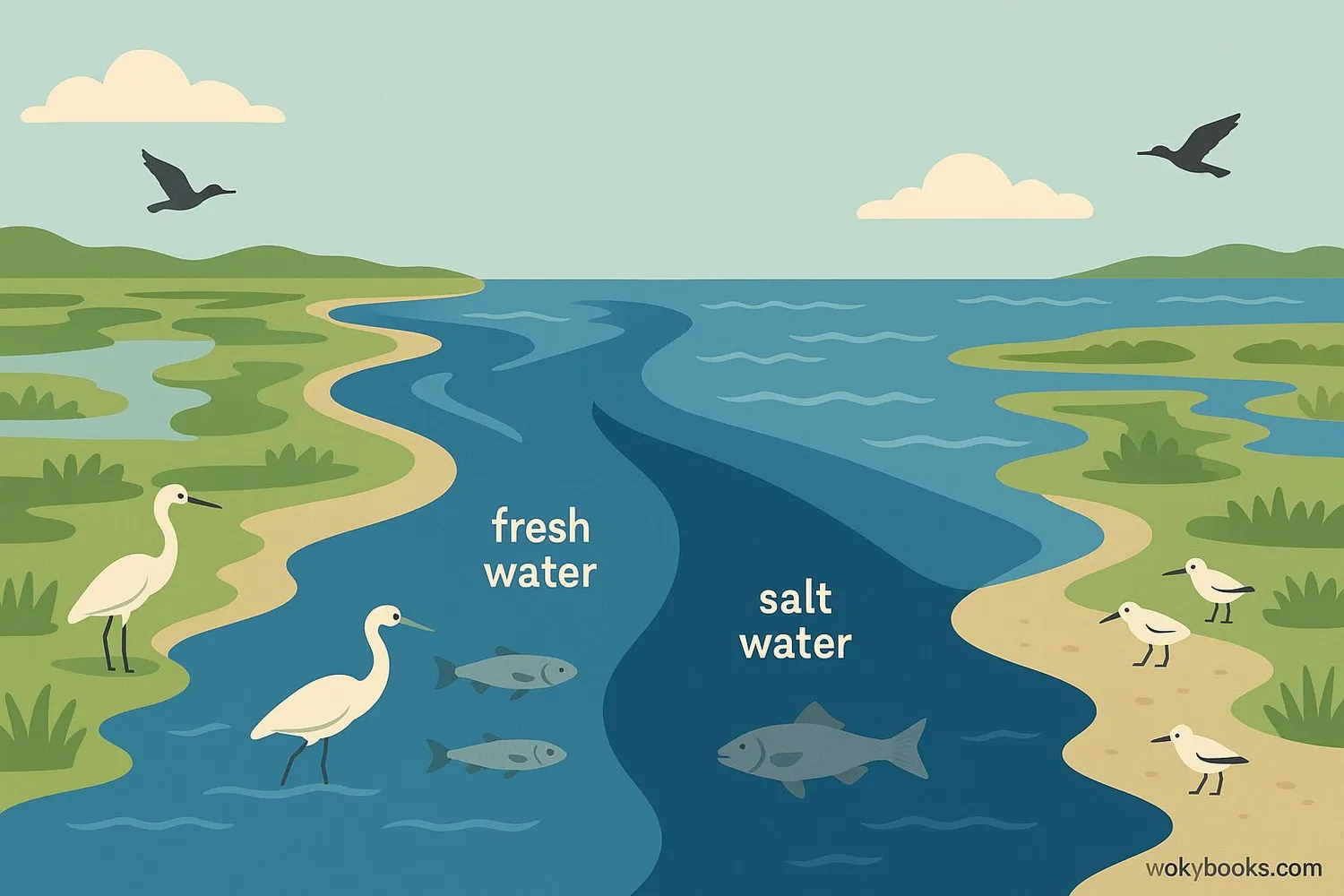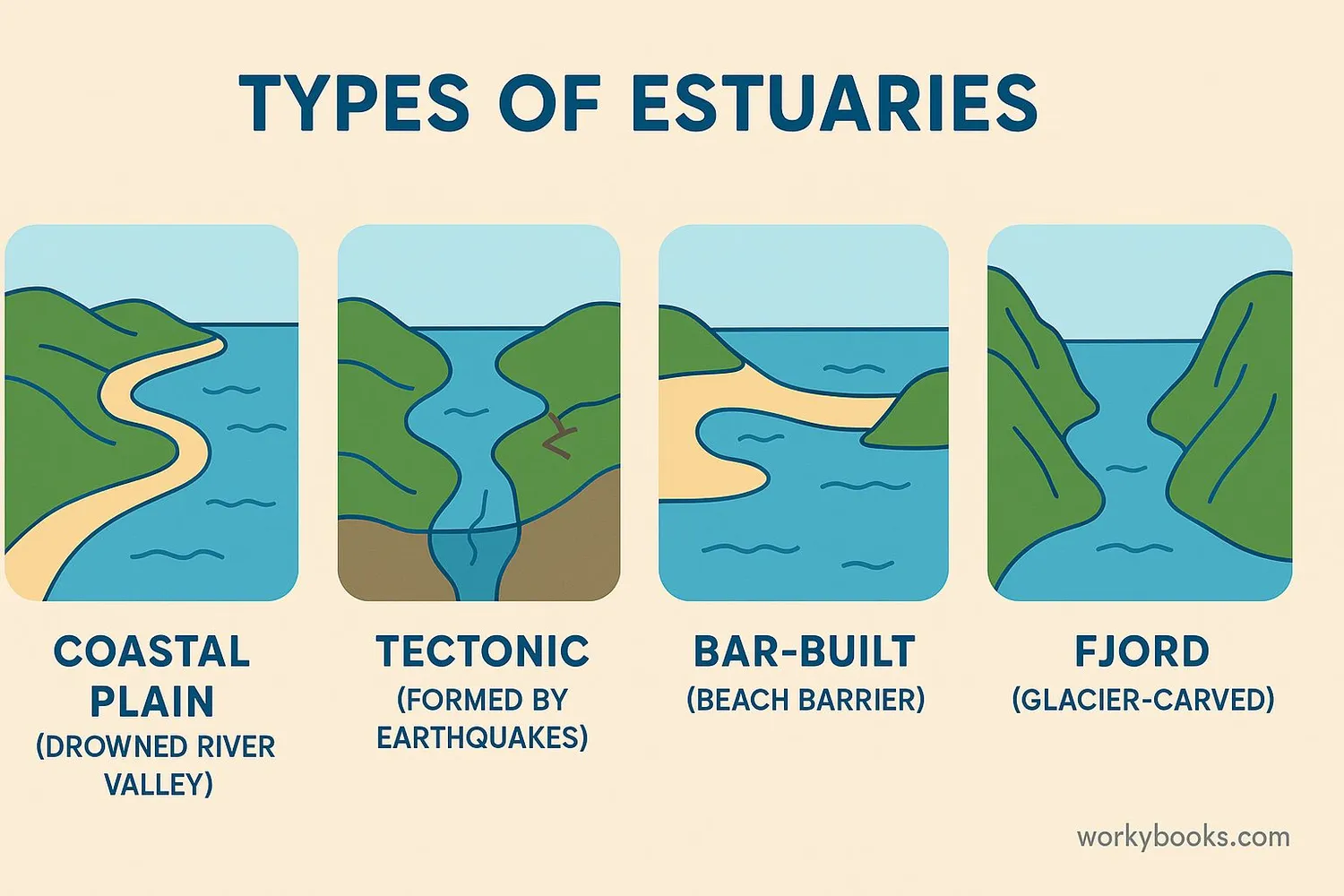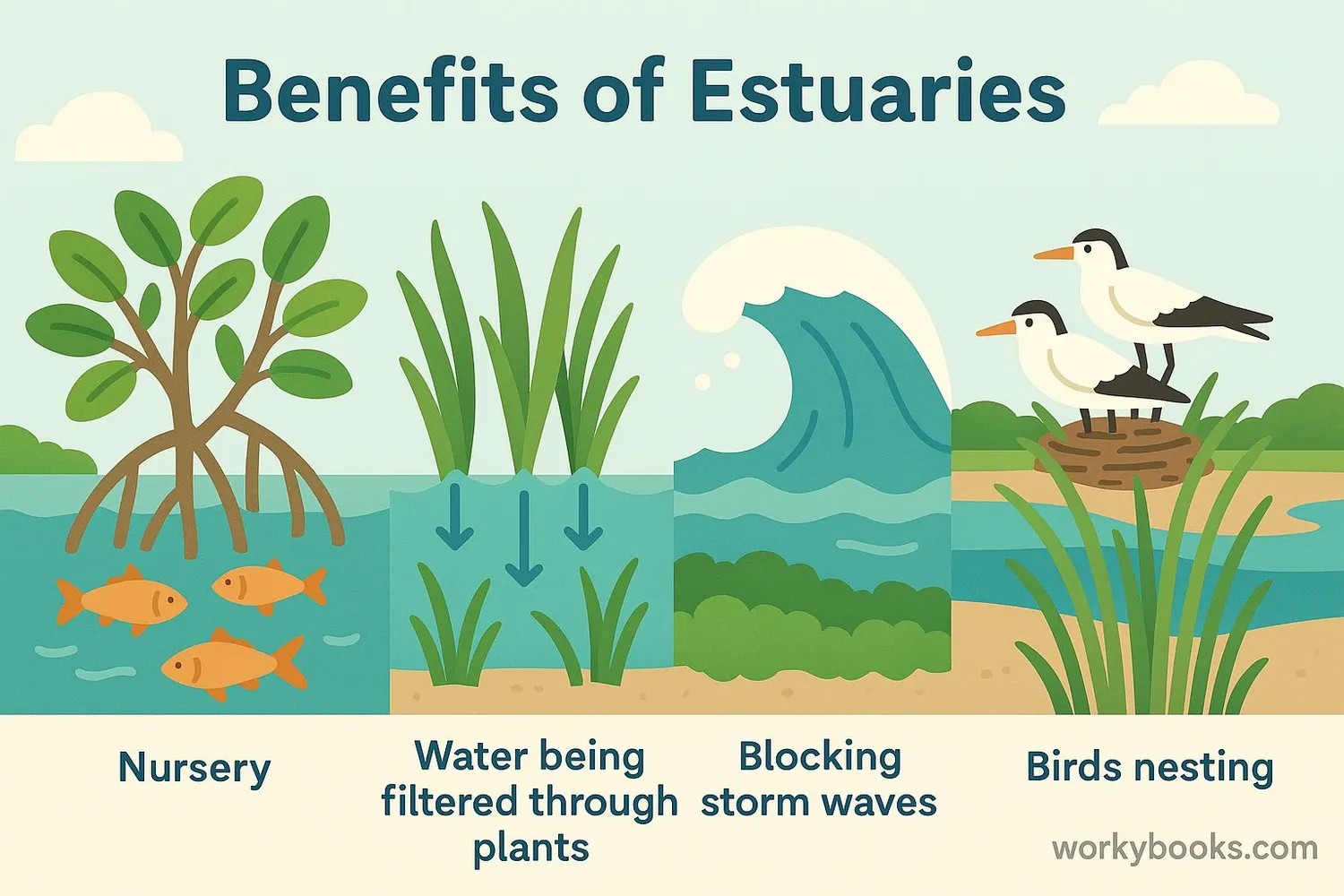What is an Estuary? - Definition, Examples, Quiz, FAQ, Trivia
Discover where rivers meet the sea in these unique coastal wetlands
What is an Estuary?

An estuary is a partially enclosed coastal body of brackish water where freshwater from rivers and streams mixes with saltwater from the ocean. These special places are often called the "nurseries of the sea" because they provide important habitat for many young fish and other marine animals.
Estuaries form in areas where the river meets the sea, usually in protected bays, lagoons, or behind barrier islands. The water in estuaries is brackish - a mix of fresh and saltwater that creates a unique environment different from either rivers or oceans.
Did You Know?
Estuaries are among the most productive ecosystems on Earth, often producing more plant and animal life than equally sized areas of forest or farmland!
Types of Estuaries

Estuaries come in different shapes and sizes, formed by different natural processes:
Coastal Plain
Formed when rising sea levels flood river valleys (like Chesapeake Bay)
Tectonic
Created by land sinking from earthquakes (like San Francisco Bay)
Bar-built
Formed when sandbars build up along coastlines (like Pamlico Sound)
Fjords
Deep valleys carved by glaciers then flooded (like in Norway)
Estuaries can also be classified by their water circulation patterns:
Salt wedge - Where river flow dominates over tides
Partially mixed - Where tides and river flow are more balanced
Well-mixed - Where tidal mixing dominates over river flow
Why Estuaries Matter

Estuaries provide incredible benefits to both nature and people:
Wildlife Habitat
75% of commercial fish species depend on estuaries at some point in their life cycle
Water Filtration
Plants and soils filter pollutants from water before it reaches the ocean
Storm Protection
Coastal wetlands absorb wave energy and reduce flooding
Other important benefits include:
• Economic value - Estuaries support fishing, tourism, and shipping industries
• Carbon storage - Salt marshes store more carbon per acre than forests
• Education & research - Living laboratories for scientists and students
Protecting estuaries helps protect our coastal communities and marine ecosystems!
Estuary Quiz
Test your estuary knowledge with this quiz. Answer all 5 questions to see how much you've learned.
Frequently Asked Questions
Here are answers to common questions about estuaries:
Estuary Facts
Discover some amazing facts about estuaries:
Size Matters
The largest estuary in the U.S. is the Chesapeake Bay, stretching 200 miles long with 11,684 miles of shoreline - more than the entire West Coast!
Super Producers
Salt marshes in estuaries can produce up to 10 tons of plant material per acre per year - more productive than most farmland!
Historical Highways
Many major cities like New York, London, and Tokyo developed around estuaries because they provided safe harbors and access to both river and ocean trade routes.
Carbon Champions
Estuary salt marshes can store 5 times more carbon per acre than tropical forests, making them important in fighting climate change.


